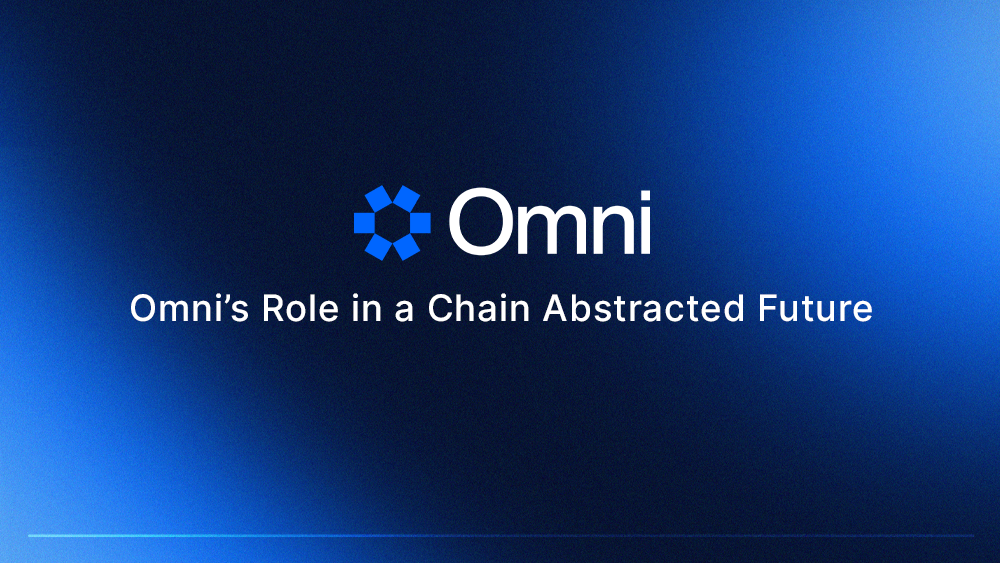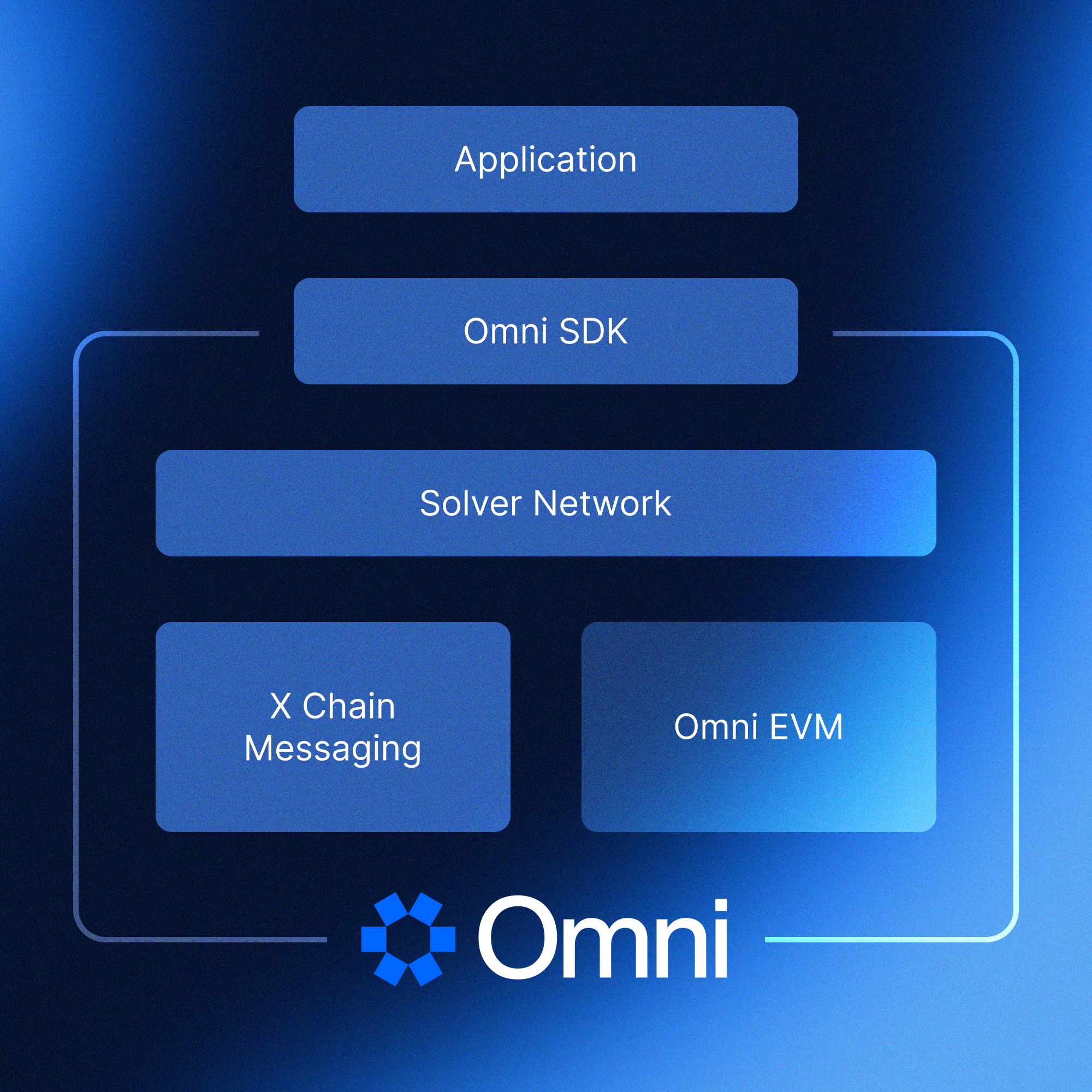Omni’s RoIe in a Chain Abstracted Future

Omni was created to address Ethereum’s existential fragmentation problem. As the number of rollups deployed has expanded dramatically, it has become proportionally more difficult for developers to access all of the users and liquidity in the Ethereum ecosystem. Solving this problem for developers has always been our north star.
Historically, cross-chain applications have been presented as the solution to this problem. Yet, despite more than three years of concentrated efforts from some of the industry's most well-funded companies, large-scale adoption has not materialized. Why?
The Problem With Cross-Chain Applications
Through hundreds of conversations with developers, two major challenges to building cross-chain have become clear:
- Long delivery timelines — Expanding an application to function cross-chain can easily take four months or more, involving design, implementation, and audits. In an industry where few applications have genuinely achieved product-market fit, slowing down product development and iteration to this extent is simply not a viable option for most teams.
- Increased likelihood of hacks — Cross-chain applications inherently involve more complex smart contracts, which increases the surface area for potential vulnerabilities. Moreover, if an interoperability protocol is compromised, all applications built on top of it become exposed to risk. In an industry that already struggles with delivering secure software, these additional risks far outweigh the potential benefits of reaching more users and accessing additional liquidity.
These challenges have caused cross-chain applications to stagnate for years, leaving fragmentation unresolved and developers still searching for a solution.
A Fresh Perspective
Today, we are introducing a new design paradigm that offers a fundamentally superior solution in terms of simplicity and security, compared to the engineering complexity and risks associated with cross-chain applications. This novel architecture enables:
- Developers to tap into all the users and liquidity across Ethereum's leading rollups with a simple frontend SDK integration — no smart contract upgrades necessary.
- Users to instantly access applications deployed on rollups different from where their funds are held. It is fully backward-compatible with existing wallets, requiring no changes to users' current setups or behaviors. Users will no longer need to worry about switching networks, enduring bridge delays, or managing gas payments across multiple rollups.
This new perspective is made possible by combining frontier research across intents and solver networks. Developers will now be able to upgrade their application to access all of Ethereum’s users and liquidity in just four days, not four months. Ethereum’s fragmentation will never be solved, it will simply be abstracted.
Technical Architecture
The foundation of the Omni Network has always been composed of two core primitives:
- An interoperability protocol purpose built for Ethereum’s rollup ecosystem
- An EVM to compute over the data sent through this interoperability protocol
Today, we are introducing two new layers on top of this foundation that will allow developers to access all of Ethereum’s users and liquidity with a simple frontend integration — no smart contract upgrades required.

Solver Network
The solver network handles all cross-chain complexities on behalf of both users and developers. This means users no longer need to think about bridging, and developers no longer need to think about deploying smart contracts on multiple rollups. Here’s a quick breakdown of how the solver network operates at a technical level:
- Omni’s solver network has timelock escrow contracts on every supported rollup — these allow users to deposit funds and declare intents for actions they want completed on applications living on other rollups.
- After a user deposits funds into escrow and declares their intent on the source rollup, a solver provides “just in time liquidity” on the destination rollup by depositing capital into the target application on behalf of the user.
- The solver then provides proof of completing the user’s intent through Omni’s interoperability network, allowing the escrow contract on the origin rollup to release the user’s deposited funds.
The best part is that, even though a cross-chain action is occurring, the experience feels instantaneous to end users. Omni achieves this by using a "pull" model, where solvers immediately front liquidity for the user at the destination as soon as the deposit is detected on the origin rollup. After providing the capital, solvers leverage Omni's interoperability protocol to "pull" a debit request back from the origin and unlock the user's escrowed funds.
In contrast, traditional cross-chain applications follow a "push" model, requiring users to wait for messages to pass between rollups before confirming that their intended action is complete. With Omni's design, only the sophisticated solvers need to deal with the complexities of multiple rollups and the inherent delays in secure messaging. For users, capital becomes instantly accessible across networks without any hassle.

The Omni SDK
New technology is valuable only when it's accessible – which is why, instead of requiring developers to interact directly with the solver network, we’ve made it incredibly easy to tap into its capabilities via a straightforward frontend SDK. This SDK can be seamlessly integrated into existing application websites, making it at least 100 times simpler than upgrading smart contracts to build a cross-chain app. With less than a week of integration, teams can regain access to all of Ethereum’s users and liquidity.
Omni’s Vision for Chain Abstraction
At Omni, we envision a chain abstracted future where interacting with blockchain networks is as simple as using the modern internet. Our approach to chain abstraction is the result of deep collaboration with hundreds of teams, enabling us to develop a solution that tackles real-world challenges for both developers and users. The introduction of the Omni SDK and solver network marks an exciting step toward this vision, but our commitment goes further. We will keep expanding Omni to make crypto as accessible as conventional web applications. We believe in crypto’s potential to enhance personal freedoms worldwide, and we are dedicated to relentlessly pursuing this vision to bring the benefits of this technology to the billions of people who need it most.

